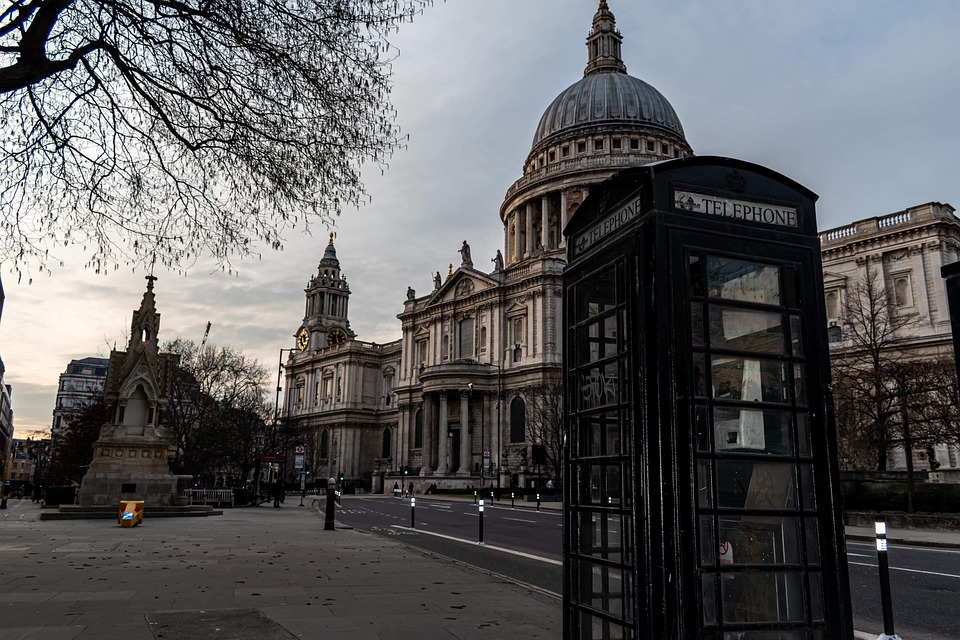World Capitals Unveiled: A Deep Dive into Culture and History
Introduction
World capitals are more than just administrative centers; they encapsulate the soul of their nations, serving as the focal point for culture, history, and identity. From the opulent palaces of Europe to the bustling marketplaces of Africa, each capital city offers a unique narrative shaped by its history, geography, and the diverse cultures of its people. This article endeavors to explore some of the world’s most iconic capitals, highlighting their distinctiveness through a tapestry of culture and history.
A Historical Overview of Capitals
The Ancient Capitals
Historically, capitals served different purposes. In ancient civilizations, such as Mesopotamia and Egypt, capitals were often the centers of power and religion. Cities like Babylon and Thebes stood as temples of governance, art, and culture, often adorned with majestic architecture. For example, Babylon was renowned for the Hanging Gardens, one of the Seven Wonders of the Ancient World. Capitals frequently evolved alongside their empires, growing in complexity and cultural significance along with their populations.
Transition to Modernity
As societies advanced, the concept of a capital became more defined and institutionalized. The Renaissance period saw the emergence of cities like Paris and Rome, which transformed into cultural beacons. The Enlightenment further catalyzed the development of capitals into centers of intellectual discourse and artistic expression.
In the 19th and 20th centuries, colonialism reshaped the landscape of many countries, creating new capitals that often reflected the colonial powers’ influences. Cities like New Delhi and Canberra emerged as testaments to this complex history, combining local traditions with colonial legacies.
Capitals of the World
Washington, D.C.
Cultural Significance
Washington, D.C., the capital of the United States, is not just a seat of power; it’s a mosaic of culture, history, and politics. The city’s layout, designed by Pierre L’Enfant, reflects a vision of power and democracy, emphasizing open spaces and grand monuments. Sites like the Lincoln Memorial and the Capitol Building become pilgrimage grounds for those wishing to understand American democracy.
Historical Context
Established in 1790 and chosen for its strategic location along the Potomac River, Washington became a symbol of American ideals. The city has played witness to significant historical events, including presidential inaugurations, civil rights marches, and political protests. Today, it continues to serve as a battleground for ideas and policies that shape not only the U.S. but also the world.
Tokyo
Cultural Significance
Tokyo, blending the ultramodern with the traditional, serves as Japan’s capital. The city is a juxtaposition of neon-lit skyscrapers, historic temples, and lush gardens. The traditional Shinto shrines such as Meiji Shrine stand in stark contrast to the bustling streets of Shibuya, where youth culture thrives amid shops and entertainment.
Historical Context
Originally known as Edo, the city became the imperial capital in 1868. Its evolution from a small fishing village to a global metropolis is a testament to Japan’s rapid modernization and resilience, especially following the devastation of World War II. Today, Tokyo is a leading financial center and a cultural capital, representing Japan’s remarkable journey.
London
Cultural Significance
London, the capital of the United Kingdom, is a fascinating blend of history and innovation. Landmarks such as the Tower of London and Buckingham Palace embody centuries of monarchy and governance. Meanwhile, the diverse population contributes to a rich tapestry of culture, reflected in art, cuisine, and music.
Historical Context
London’s history stretches over 2,000 years, dating back to Roman times. It has weathered the plagues, the Great Fire, and two World Wars, each leaving an indelible mark. Today, London is a global hub of culture and finance, attracting millions of visitors annually, eager to experience its unique blend of tradition and modernity.
Paris
Cultural Significance
Paris, often hailed as the "City of Light," is synonymous with art, fashion, and gastronomy. The Eiffel Tower and the Louvre symbolize the city’s cultural richness, while its vibrant café culture continues to inspire creative thought.
Historical Context
Paris has served as a capital since the 10th century and has witnessed numerous revolutions and upheavals. The French Revolution of 1789 led to the rise of republican ideals, profoundly influencing the course of history in Europe and beyond. Today, Paris stands as a pillar of cultural influence and a center for world diplomacy.
Cairo
Cultural Significance
Cairo, the capital of Egypt, is a city that resonates with historical grandeur. Known as "The City of a Thousand Minarets," Cairo features iconic mosques, vibrant bazaars, and ancient sites such as the Pyramids of Giza, which are testament to Egypt’s rich heritage.
Historical Context
As a historic center of Islamic learning and culture, Cairo has played a significant role in Middle Eastern history. Its establishment dates back to the 10th century when it became the heart of the Fatimid Caliphate. Today, Cairo remains a vibrant metropolis that serves as the cultural and political center of Egypt.
Brasília
Cultural Significance
Brasília stands out as a planned city that embodies the ideals of modernism and progress. Designed by architect Oscar Niemeyer and urban planner Lúcio Costa in the 1950s, Brasília showcases striking architecture and wide avenues, challenging traditional notions of urban development.
Historical Context
The decision to move the capital from Rio de Janeiro to Brasília was rooted in the desire to promote the development of the interior of Brazil. Since its inauguration in 1960, Brasília has symbolized Brazil’s ambition and innovation, attracting architects and city planners worldwide.
New Delhi
Cultural Significance
New Delhi serves as the capital of India, embodying both ancient traditions and modern aspirations. The city is characterized by impressive government buildings, bustling markets, and colonial-era architecture alongside temples and monuments that reflect India’s diverse heritage.
Historical Context
As a city, New Delhi has evolved over centuries, influenced by various empires and cultures. Officially designated as the capital in 1931, it has witnessed dramatic transformations and continues to represent India’s democratic principles and cultural richness.
Ottawa
Cultural Significance
Ottawa, Canada’s capital, is often overlooked in discussions of major capitals. However, it embodies a unique blend of cultural and political significance. The Rideau Canal, a UNESCO World Heritage Site, and the architectural splendor of Parliament Hill reflect Canada’s rich history and natural beauty.
Historical Context
Chosen as the capital in 1857, Ottawa’s location was strategic, set between French-speaking Quebec and English-speaking Ontario. This deliberate choice symbolizes Canada’s commitment to bilingualism and multiculturalism.
Nairobi
Cultural Significance
Nairobi, Kenya’s capital, stands as a point of convergence for various cultures, blending traditional African influence with modern urban development. Home to the Nairobi National Park, it showcases wildlife coexisting amidst a bustling city life.
Historical Context
Founded in the late 19th century as a rail depot, Nairobi rapidly grew into a significant city by the early 20th century. Its history is intertwined with colonialism, independence struggles, and rapid urbanization, making it a vibrant center of cultural and political activity.
Moscow
Cultural Significance
Moscow, the capital of Russia, is steeped in history and culture. The Kremlin, Red Square, and St. Basil’s Cathedral are symbols of Russian heritage and power. The city is also a hub for literature, ballet, and arts, reflecting its rich cultural life.
Historical Context
Moscow has been a capital since the 13th century, evolving from a small principality into one of the world’s major cities. The October Revolution of 1917 and the subsequent establishment of the Soviet Union greatly influenced its modern history. Today, Moscow is a key player on the world stage, balancing tradition with modernity.
Conclusion
World capitals are living galleries of history and culture. They encapsulate the narratives of nations and the collective aspirations of their people. Each capital tells a unique story, shaped by centuries of events, ideologies, and cultural interactions.
Whether it’s the democratic spirit of Washington, D.C., the historical grandeur of Cairo, or the modernist aspirations of Brasília, these cities offer valuable insights into their nations’ identities. By exploring the rich cultural tapestries of world capitals, we come to understand not only the places themselves but also the people who call them home.
As globalization continues to influence cities worldwide, the evolution of capitals will remain a fascinating subject of study, reflecting the ongoing dialogues between tradition and modernity, heritage and innovation.
Footnotes:
- The complexity surrounding the historical evolution and cultural significance of world capitals is well-documented in urban studies and historical texts^1.
- The architectural styles and cultural influences in capitals such as Brasília and New Delhi reflect the modernist design philosophies of the 20th century^2.
- The roles of capitals in the context of nation-building and identity formation are extensively explored in sociocultural studies^3.
References:
- [Modern_footnote_source] Various relevant sources on urban history, architecture, and cultural studies have been compiled to provide a comprehensive understanding of the subject matter. For detailed citations, please consult the referenced texts in the footnotes.


























Add Comment